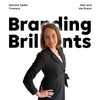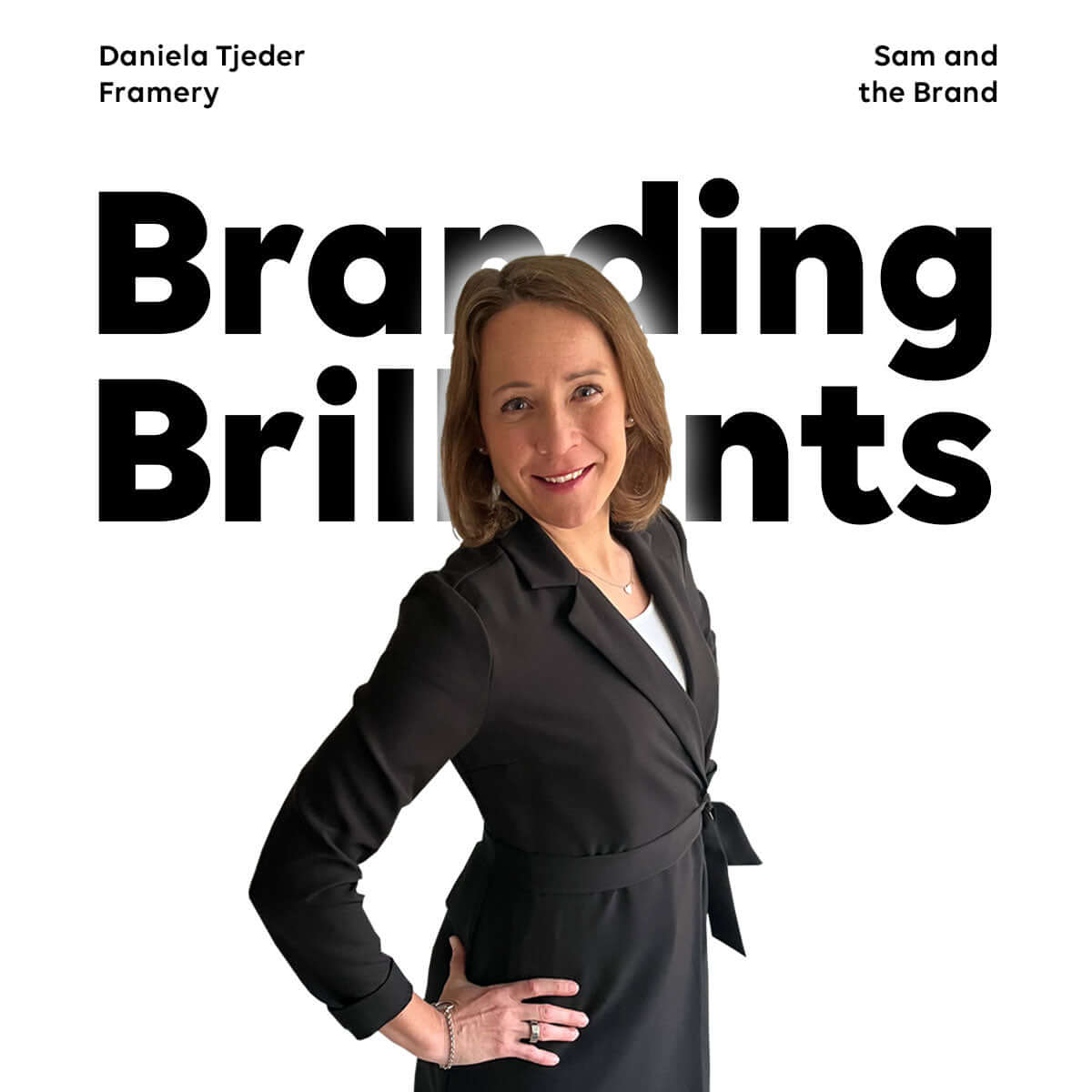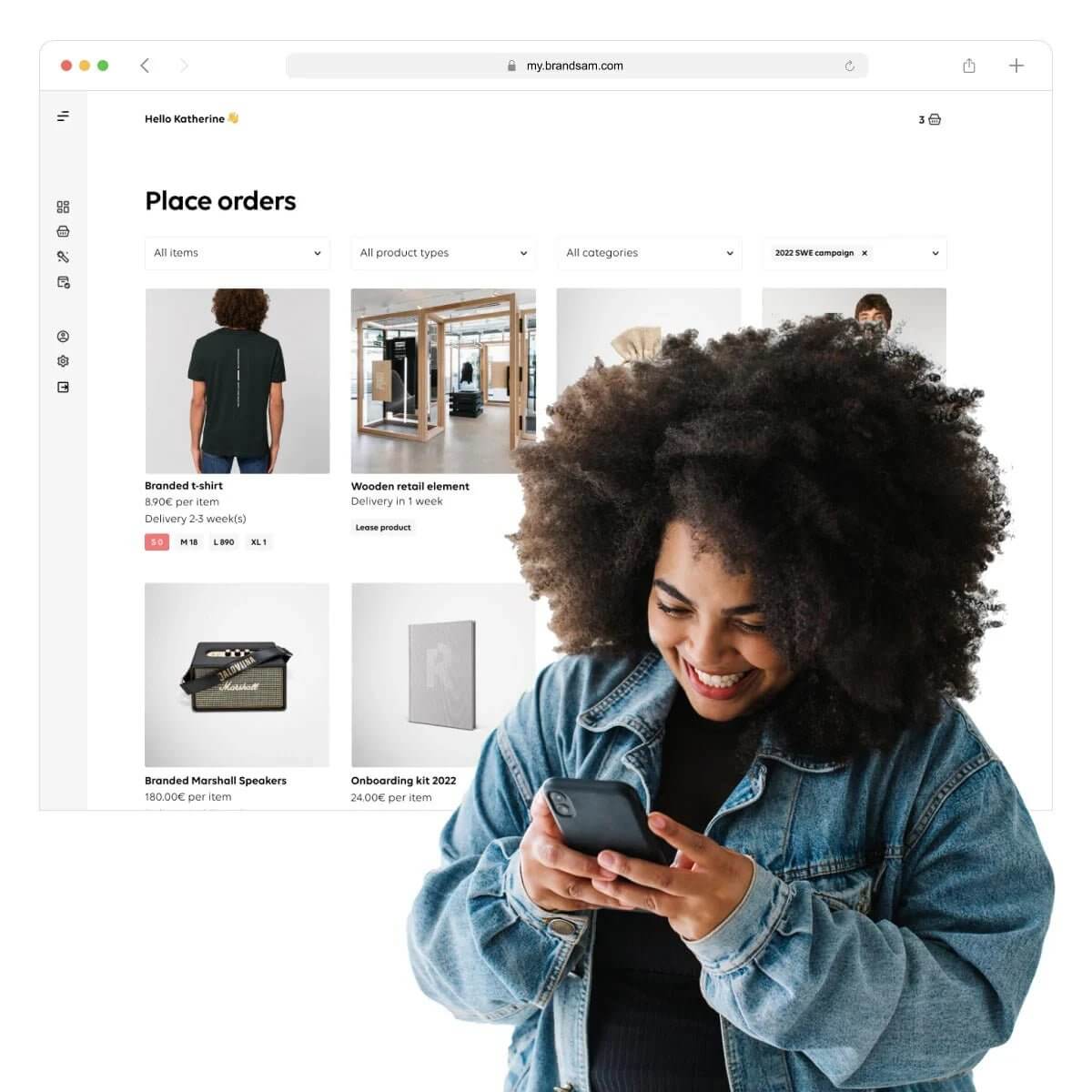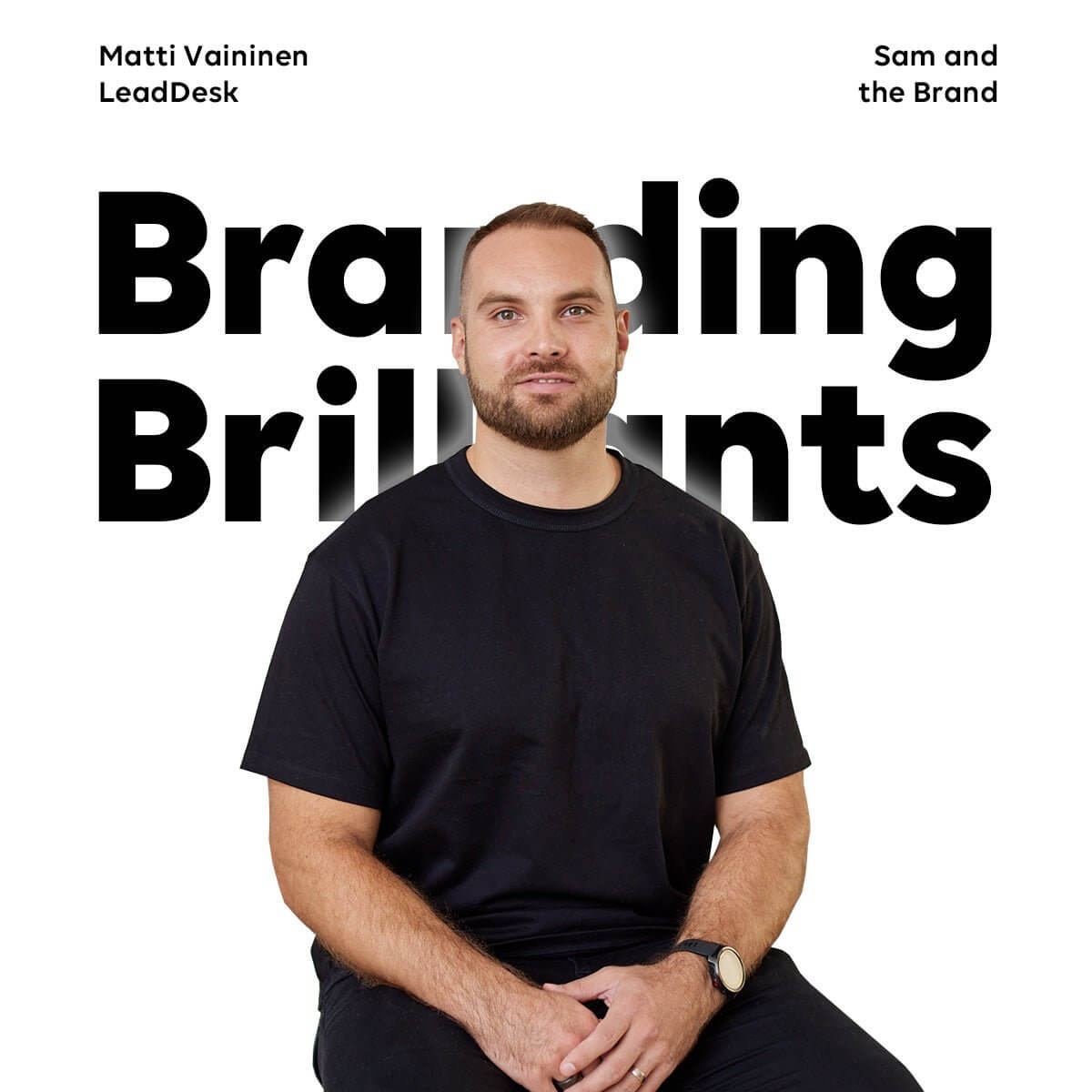Branding Brilliants – Daniela Tjeder
- 16 min reading time

Daniela Tjeder is one of the most positive and talented people I know. Whilst working in demanding senior marketer roles at companies like Hartwall, Suunto and Framery, she's played football and futsal in the Finnish national team simultaneously. Having the time and skills to do both is ridiculous and admirable.
Daniela has been working with global brands for over a decade and is just about to travel to California to learn from her customers, team members and retail partners. Being closer to the people.
Let's warm up Dani. What is a brand?
“A brand is something that evolves and grows from all experiences, interactions and touchpoints that people might have with an organisation or a product.
Everyone within the organisation or product is responsible for creating a brand and its experience. This means the organisation needs to be aware of all customer touchpoints and create structure and guidelines for the team, but delivering a brand (experience) is on everyone.”
You’ve got customer service, installation and sales teams at Framery outside your marketing team. When everyone is responsible for the brand, how do you empower these other teams to create those desired brand experiences?
“We want to tell the story and the strategy of the company to our teams, and then highlight how each individual and each team contributes to this bigger picture.
One of the key tools here is the customer journey. What does that look like? What are our customers going through? How do they interact with us? This helps our teams not just to think about the brand from function and own role perspective, but also how their interactions with the customer are part of the whole customer journey.
I have a favourite quote that I believe in brand building: “Consistent but not predictable.” It indicates that you have to create clear and simplified guidelines so that the brand stays consistent. And once you have those guidelines and structure in place, then you have wonderful opportunities to create delightful and surprising moments which then lead to feelings and memories of the brand. But if the brand and the experiences it creates aren’t consistent and there’s no distinctive message, the brand rambles and is not memorable.”
I have a favourite quote in brand building: “Consistent but not predictable.”
“You know, the worst nightmare is that you’re building a brand and running these fine campaigns, but when you ask the customers they say: ‘Yeah, I remember that lovely ad but have no idea which brand or company made that’. So it doesn’t matter how amazing your brand videos are or how many awards they win at Cannes Lions if it doesn’t bring back to the brand.
I think our slogan, ‘Serious about happiness’, crystallises our brand essence. For everyone at Framery, no matter whether they work in product development, sales or customer support, happiness is our purpose. It’s how Framery got started. Our customers started telling us that by providing more quietness to their offices (through soundproof booths), we helped to improve the atmosphere and overall feeling in the offices. People were suddenly happier. And more productive.
Another part of the slogan, serious, is all about how seriously we take creating quality products. So whenever we are creating new marketing campaigns or designing new products, if we just think and include these things, our team members implement our brand.
So by remembering two main elements, the customer journey and their role in it, as well as our values, we can ensure that everyone in the company understands how we build a brand together.
You’ve worked at Hartwall and Suunto with consumer products before starting at Framery Acoustics doing B2B marketing. Is it different to build B2B brands?
“I think there shouldn’t be that big of a difference between B2C and B2B, but I would still say that B2C marketing is in general on a better level than B2B. This is of course a big generalization, and it naturally depends on the brand - sometimes there’s a much bigger difference between two B2C brands than between one B2B and one in B2C. I believe that B2B brands should utilise the B2C branding approach more to build more differentiated brands.
I feel that sometimes B2B marketing is mostly focused on communication and all the other parts of the traditional marketing four P model (product, price, place and promotion) aren’t in that big of a focus. At the same time, I thought that moving into B2B was going to be all about LinkedIn, but Instagram and Facebook are actually our most effective channels when it comes to driving leads so in the end the actual work and activities aren’t really that different.
This is a bit of a cliché, but we’re still promoting from humans to humans. In our customer journey, we recognise that there are multiple stakeholders involved and some of them we can’t control. A decision-maker is often a different person than the end user. There are channel and installation partners involved. We just need to understand the whole customer journey and prepare. Classically said in the middle of every challenge or challenge lies an opportunity!
Working at Hartwall the company was very brand-led, while when I started at Framery marketing was a bit more of a support function so we had to push quite a change to truly become a business-driving function."
Framery is serious about happiness. You mentioned earlier so nicely how everyone in the organisation knows the mission and customer journey. How does the brand impact product development?
“Aah. It’s collaboration. The marketing team’s role is not to create the brand, but the brand is best built when all the business functions work well together.
There should be a holy trinity between product development, sales and marketing when creating a product or service. Then we can together discuss and determine not only what the product is and does, but what its (commercial) position in the market, key value prop and end customers are. Already then we can plan how we launch this new product and who is it relevant to.”
You’re going to California next week and you are operating globally. What are your tips for other brands to consider when they are aiming to expand outside the Nordics? This could include brand management, creation, marketing and scaling.
“Get your ducks in a row first. You need to have the basic parameters right like a brand promise, positioning and offering. Everyone in the team understands and can stand behind them. Because when you expand with a brand where things are not thought through and aligned, you’ll find it more challenging.
Once you have the basics right, then you need to understand the local market and its requirements. Often those local markets have local needs that we need to adjust to even though the brand would be managed centrally from another location. There are always cultural differences. Business differences. Differences among end users.
You’ll succeed when you understand local market needs and then create solutions centrally that are aligned with the brand instead of creating local fixes or hacks. So having brand guidelines with explanations including listing things we can adjust locally and which things are unflexible. This will help local markets to understand and keeps the brand consistent.
But you know, we’ve all heard cases when some markets use these cultural differences, almost like an excuse to do their own thing and go off-brand.
That’s why we need to serve the needs of all markets proactively, whilst keeping the brand consistent. If markets go off-brand, we’ve done something wrong or something is missing and we didn’t help them to succeed. When these things happen, it’s good to reflect on why this happened and what we could do to prevent this in the future across the firm.
I can also see big differences in approaches when the brand is created initially for Nordic markets or immediately planning to scale the business for global markets. The founders at Framery or the folks at Suunto immediately had a global mindset and brand strategy when starting. Of course, you need to sometimes adjust your brand and how it works in Finland, but it's easier if you think globally from the start.”
Do you have any examples where you needed to adjust the brand when going to a different market?
“When I was at Suunto, our primary market was China. Chinese are superstitious about the number four (similarly to how some Westerners are about 13) because there it sounds like the word death. That was one of the things we needed to adjust to. So we didn’t use the number four.
One other thing that we’ve realised with Framery is the word happiness in France. In other markets, our 'happiness' message has worked well and customers have been interested to know more about it. For some reason, that word doesn’t resonate that well over there, although our other key messages like quality, seriousness, being from Finland and sustainability work nicely.
Overall, we communicate the same brand themes and messaging in France as well as in the other markets, but just need to adjust them a bit locally. Tone down some of them and pump up the others.”
What’s the role of physical marketing in the future?
“Physical marketing will continue to be extremely important, but it needs to be more selective. Brands need to choose the themes and topics together with the moments where they utilise the physical aspects of their brand. If you can do something amazingly well digitally, you probably shouldn’t do it physically.
For us at Framery, trialling a sound-proof booth is hard to replicate in the digital world; closing the booth door, the wonderful experience to be inside a booth when the air floats around, it’s quiet and there’s no echo. So think those kinds of brand experiences need to happen in the physical world.
“There’s no point in going to a tradeshow if you just show the same video content on your exhibition stand’s screens that you could display on your digital channels.”
But I believe the importance of traditional trade shows is diminishing. Like I said earlier, you need to be more selective: which trade shows to attend, what does our stand look like, what’s the experience we want to create there and what are our goals? There’s no point in going to a tradeshow if you just show the same video content on your stand’s screens that you could show on your digital channels. Instead, use tradeshows to build relationships, meet people and run product trials.
Hybrid marketing and events that combine physical and digital aspects are really interesting. How you scale those are just the big question so that the trade show is still relevant. But doing digital marketing well before and after a tradeshow is super important so that you can get the most out of the physical event."
What about brand activations and pop-ups? What’s their role in building brands?
“This is the part ‘Not predictable’ I was referring to earlier. Brand activations and popups are great ways to build an emotional connection between the brand and the customer. Surprise customers positively and create memorable brand experiences that last a long time. These things build customer loyalty. Especially when your product is physical, the physical experiences and activations matter.”
Let’s walk down memory lane. What marketing campaigns, product launches or branding activities you’ve done that you’re most proud of?
“I’m really proud of how we did the whole product launch for our first connected booth Framery One. We did the launch 100% virtually due to the pandemic in early spring 2021. The timing of the launch was a bit peculiar because no one had been working from the office for the past year (due to the pandemic regulations) and we still decided to launch a new quiet booth product for the corporate offices. Traditionally before that, all of our product launches had been done at trade shows for all stakeholders at once.
This time we wanted to maximise the impact of the launch and especially empower our resellers as part of the customer journey. Resellers have a significant role in our industry so we decided to launch Framery One together with them.
First, we only launched the product to our resellers, dealers and to selected partners two weeks before our global launch. It was a full-on virtual show with multiple speakers revealing new product innovations, the key value propositions and market position and convincing them how easy it will be to sell this new product; this is how we are going to invest in marketing at Framery, here are the marketing materials you can use and guides what we need to prepare together before the launch.
No one in the industry had done anything like this before. The feedback from the first launch with resellers and dealers was great: ‘You guys are launching products like Apple and Tesla.’
Commercially this initial launch was also a success. We surpassed our sales target of selling demo booths to our resellers and partners’ showrooms by 3x.”
Suddenly, the anxiety of getting our new product information leaked prior to the launch turned into despair.
"After the first launch with resellers and dealers, we had to wait for two weeks before launching it to the public. We knew there was quite a big risk that some information would accidentally leak before the launch. After the first week of waiting, silence and numerous Google Search refresh clicks this anxiety of leaking the news turned into different despair: does this mean that no one is interested in or excited about our new product?
Launch day to the bigger audience was unbelievable. We more than doubled our average monthly website traffic for months, there was a 130% increase in leads compared to the monthly average, we got 1,7M dollars worth of earned media and exceeded our sales targets by 30%. All social media channels were talking about us. And in a consistent way. Because we gave all our dealers and resellers the same videos, images, copy and content, it filled social media. They shared them across their channels. All of their websites had been updated with our new product content.
At first, I thought I’m inside my social media bubble. Am I the only person seeing this? Then I started getting messages from competitors’ from France and Poland saying that ‘Please stop this Framery madness!'"
Marketers are often tasked to increase brand awareness but also improve conversion that leads to a sale. I understand context matters here, but in "a-very-black-and-white-inside-a-vacuum" world, which one does a marketer need to focus on and when?
“There are a lot of things to consider here. Firstly, it’s different if your brand is global or very well-known or if you have to start building it from scratch. When I was at Hartwall, and when you work with brands like Pepsi, you don’t necessarily have to do that much work on brand awareness. Everyone knows Pepsi.
Also, the basic business goals like customer acquisition costs and new business vs. existing business influence where to focus. Based on the business goals you’ll then make the marketing and branding goals.
It’s good to remember that you have to build the top of the funnel (e.g. AIDA model’s Awareness, Interest and Desire) so that you generate sales and convert customers to buy. So if you only focus on improving conversion, the people coming through the funnel will end. ”
You've done a whole lot of great things in your career already. When you look back now to your career, what tip or guidance you’d give to a younger Daniela, a younger version of you, who’s just starting her career in marketing and branding? What should she pay attention to, remember or learn?
"Now I sound like a cliché machine, but I would say that enjoy those moments. Enjoy the work. When I now look back at my time at Hartwall – the people there, the ways of working and the mindset where each brand manager is the CEO of that brand – that was great. You need to know how the business works. Know and learn everything from product development to profitability and logistics. You need to be on top of everything and understand the full picture.
Now I sound like a cliché machine, but I would say that enjoy those moments. Enjoy the work and the people. Consciously make time to learn from the people you look up to. Ask questions.
The time I had at Hartwall was great, don’t get me wrong here, but what I would recommend younger Daniela to consciously do even more is to learn from other people you look up to. Learning from their professionalism, style, approach, ways of working etc. Not taking things they do for granted, but asking more questions and learning from those people: why do they do things as they do? How do they do it? Instead of only focusing on projects and the next items on your schedule, find time to ask and learn from other people."


